When we walk the roads that go into the surroundings of Lake Mývatn, we observe that there are hardly any population centers and the vast irregular fields appear covered by authentic seas of solidified lava, craters, fumaroles and other elements that leave no room for doubt about the intense geothermal activity who owns the area.
Flattened several times by lava in the last few millennia, the area is known to Icelanders as a highly dangerous place to settle their lives. However, life goes on around the waters of Mývatn, the fifth largest lake in Iceland and the main tourist attraction in the north of the country.
some brave they have established farms, restaurants and hotels there, while the flora and fauna thrive in some lands that are taking a break between eruptions of the ten volcanoes that seek their ruin every certain number of centuries.
explore this fascinating place in Iceland it is an essential experience. For this, we will need a couple of days, because, although the distances between the different points of interest are very short, each of them is so different and impressive that it is worth being enjoyed with all the peace in the world.
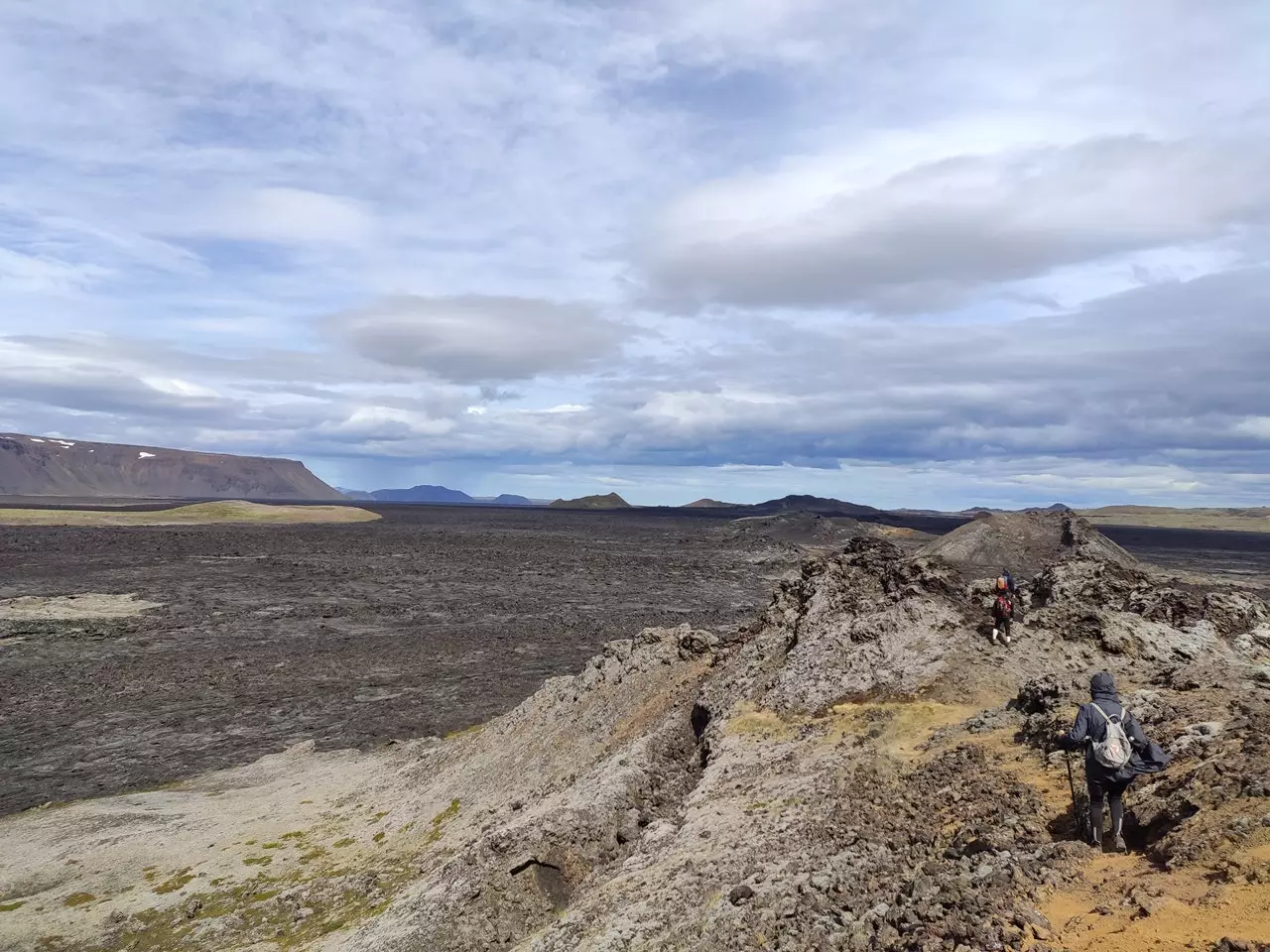
Leirhnjúkur lava field.
WALK OVER A LAVA FIELD
Perhaps there is no more authentic place in the Mývatn than the Leirhnjúkur lava field. Here we travelers can walk on a huge field of solidified lava, formed by the so-called Krafla Fires. In 1975, and for nine years, the rivers of fire did not stop spilling through the countless fissures that opened in this land. A spectacle of devastation without comparison.
A network of marked trails leads us to discover volcanic tubes, fumaroles, colorful rocks covered with sulfides and moss –that precious Icelandic moss with healing properties–, Lookouts to the wild and desolate lands, and countless small polymorphic craters.
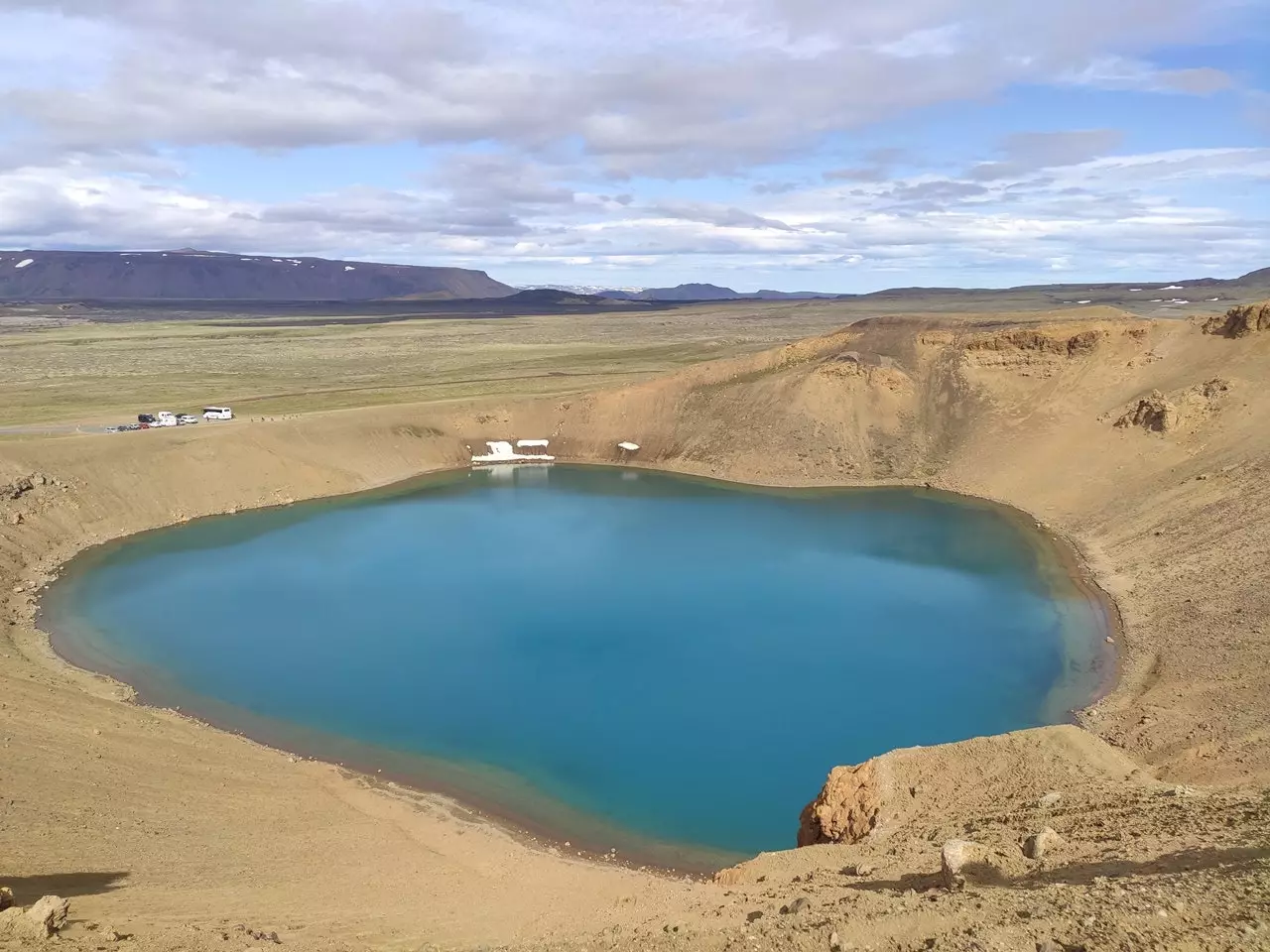
Viti Crater.
VITI CRATER AND THE THERMAL BATHS OF MÝVATN
Less than five minutes' walk from the car park that gives access to the Leirhnjúkur geothermal area is the Viti crater, Icelandic word meaning 'Hell'. Nevertheless, this access to the underworld is much more beautiful of what the different religions usually show us.
And it is that At the bottom of the Viti crater there is an ashy blue lagoon, which can be admired from different points following a path that borders the crater. Some brave people decide to go down the slope to try touch that mesmerizing water, but the truth is that it is forbidden by the Icelandic authorities.
Where we will be able to immerse ourselves will be in the beautiful and therapeutic waters of the thermal baths of the Mývatn. Here we will find a series of pools of turquoise waters, rich in minerals and at about 36-40 degrees of temperature. An ideal place to relax enjoying some breathtaking views.
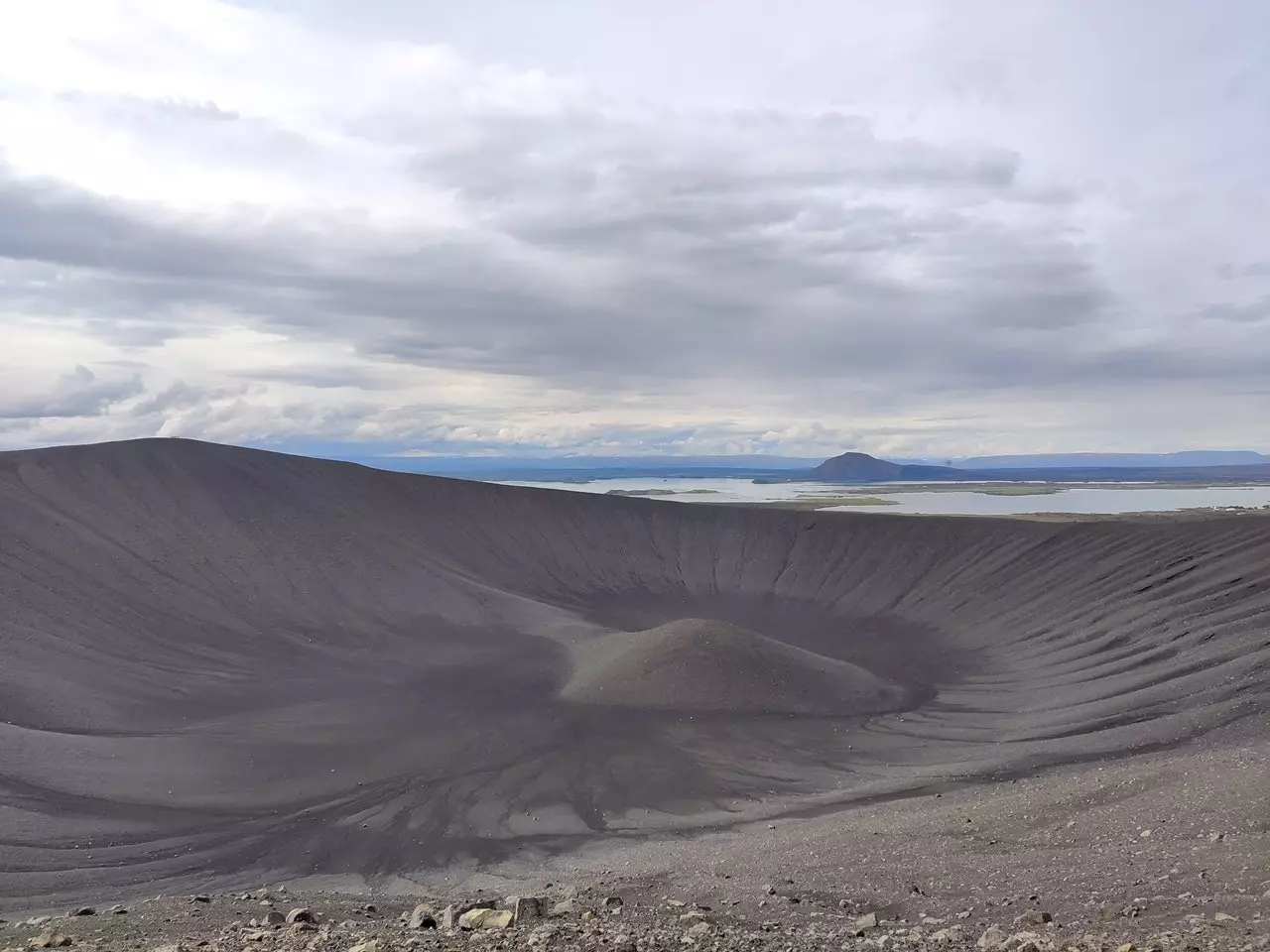
Hverfell Crater.
HVERFELL, THE LARGEST CRATER IN ICELAND
Among the many craters that protrude from the plains surrounding Mývatn, Hverfell is the most impressive of all. It can be seen from several kilometers around, Rising above the earth like a giant gray mushroom, with that layer of stone and ash that seems installed there since the beginning of time. Nevertheless, that crater was formed 2,500 years ago, and with its 400 meters high and one kilometer in diameter is the largest of Iceland.
A path starts from the car park and takes us, in about 20 minutes of continuous ascent, to the ridge surrounding the crater. Going around the entire perimeter of it –something that can be done in about 45 minutes– gives us a good number of different panoramas.
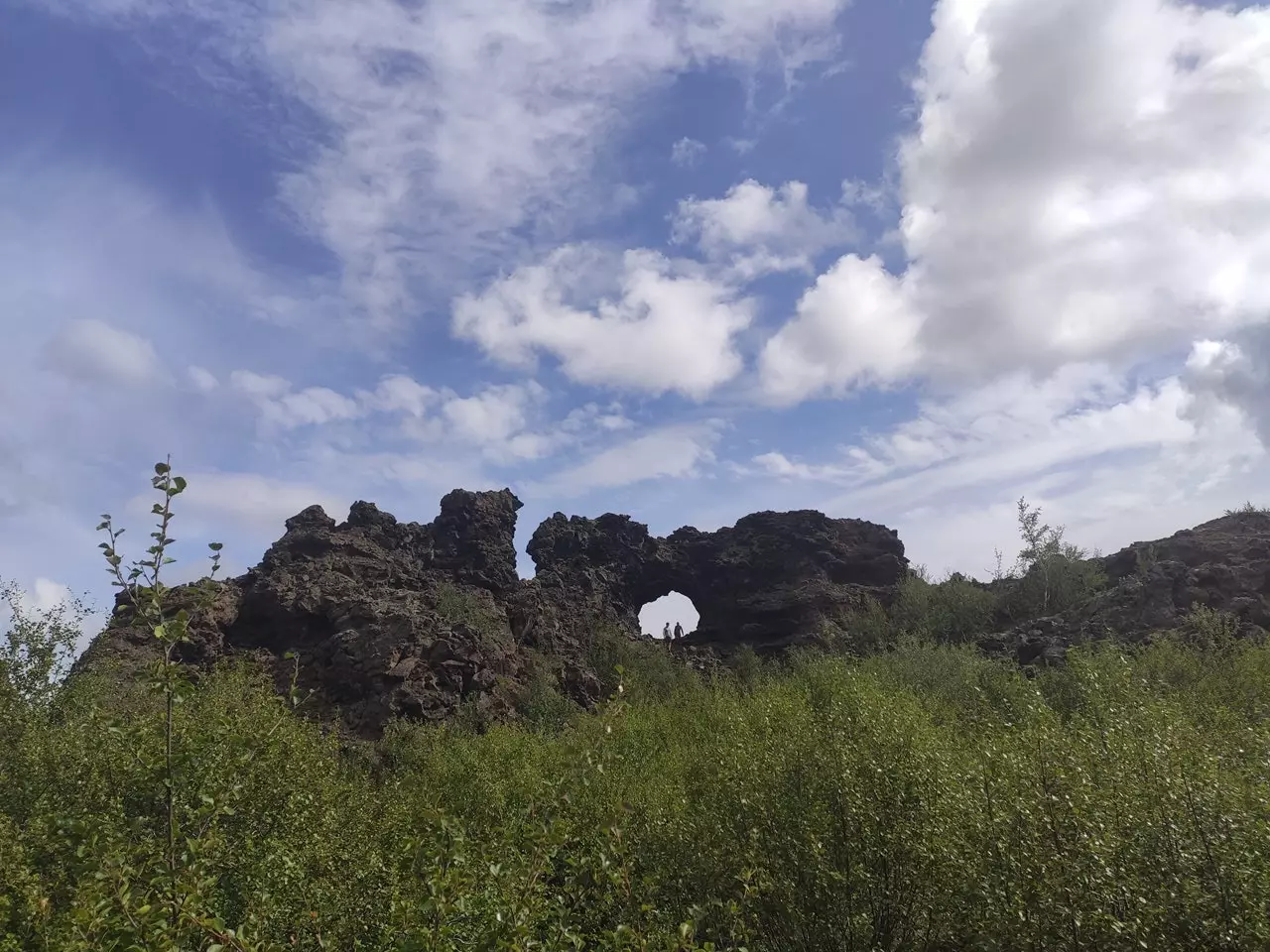
Dimmuborgir lava city.
DIMMUBORGIR, LAVA CITY AND HOME OF THE YULE LADS
One of those magnificent images that can be enjoyed from the top of the Hverfell crater is that of the lava city of Dimmuborgir. In fact, although both places are connected by road, it is much more interesting walk the dramatic and desolate plain that separates them. It's like walking through J. R. R. Tolkien's Mordor in his play The Lord of the Rings.
Dimmuborgir is an ancient lava field originated, about 2,300 years ago, by an enormous Volcanic explosion.
Several perfectly signposted trails lead the visitor through a city of lava dotted with arctic birch trees and other bushes typical of Icelandic volcanic areas.
Here and there they appear magma castles, with shapes ranging from arches to churches, through caves, clock towers and houses of magical beings, such as the Yule Lads.
The Yule Lads are the Icelandic folk version of Santa Claus. It is about the 13 mischievous offspring of a troll marriage. From December 12, and until Christmas morning, they leave their cave, one by one, to carry out their pranks and leave gifts to Icelandic children.
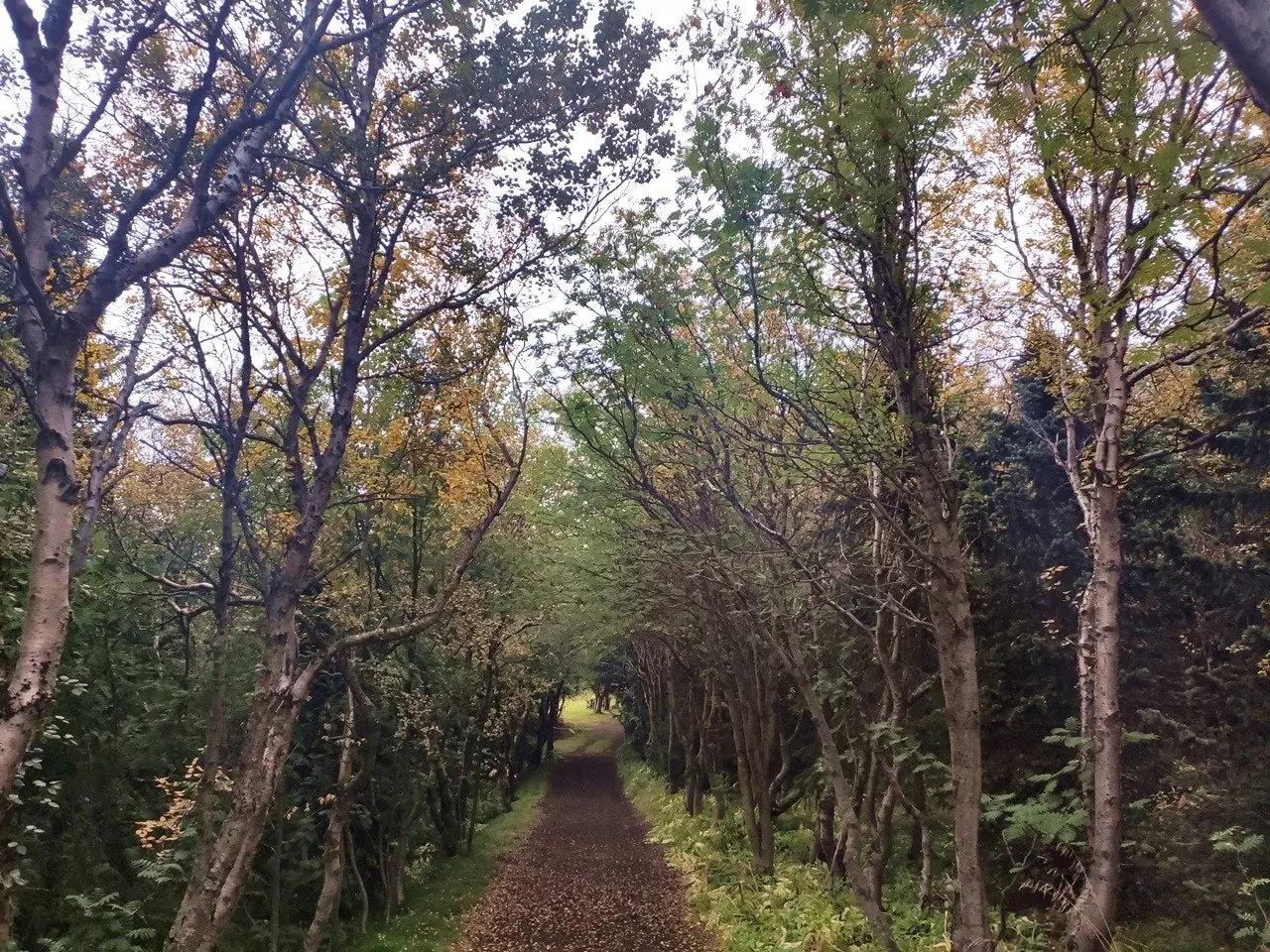
Hofdi Grove.
HOFDI, THE GREEN OASIS
Less than five minutes by car from the gray Dimmuborgir, the colors return to the canvas of the Mývatn thanks to the Hofdi Grove. This arboreal oasis between the lava fields is the ideal place to take a leisurely summer walk and enjoying the viewpoints that, on the lake and the craters, give away the trails that go into the forest.
People say that Hofdi originated thanks to the initiative of a couple of lovers who settled here. They were the ones they were planting trees for decades to create this beautiful space attached to the waters of the Mývatn.
Today is a place of great ecological value, with fish, birds, trees, bushes and, how could it be otherwise in this area, volcanic pillars emerging from the water.
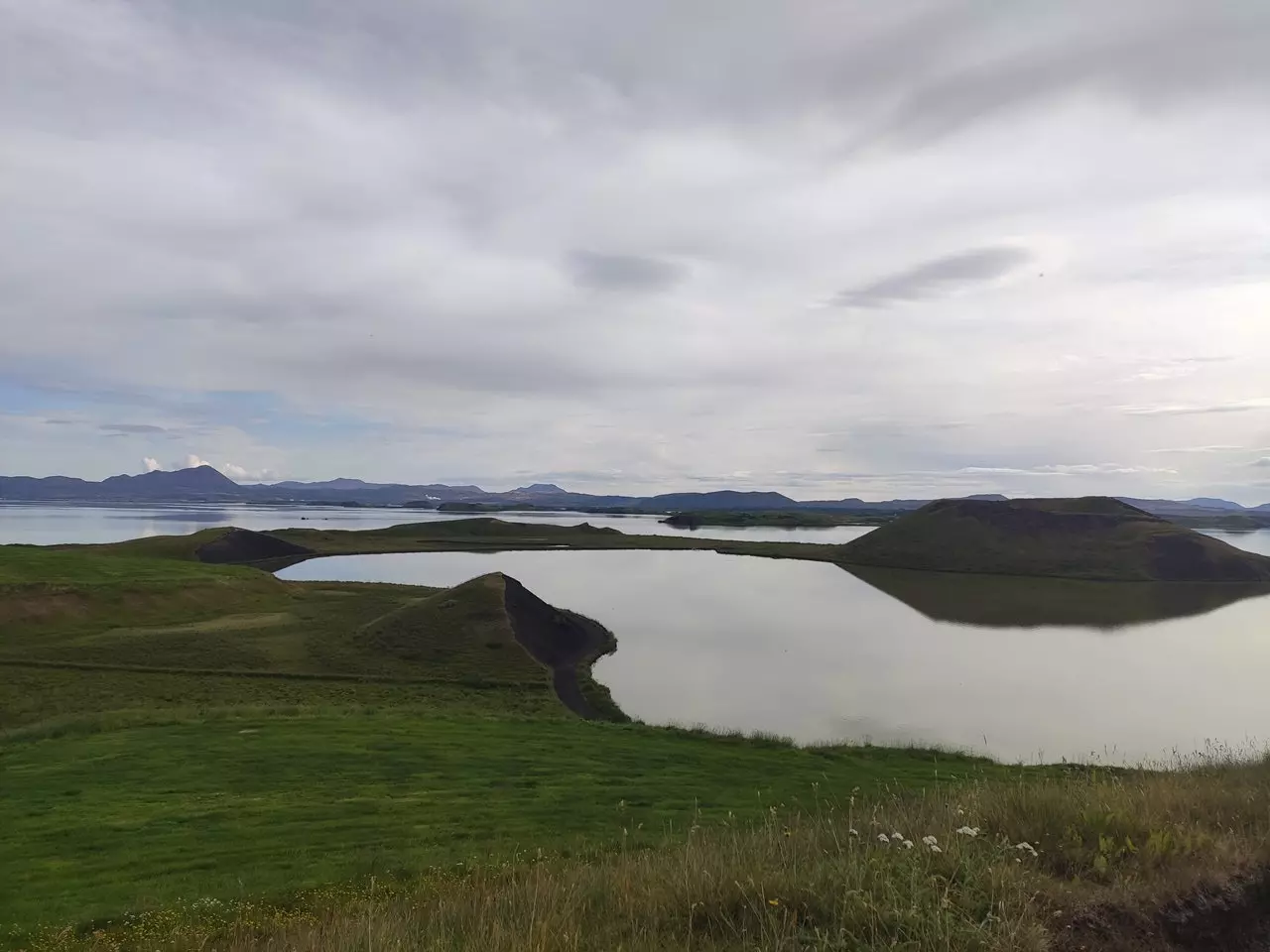
Skútustadir pseudocraters.
THE PSEUDOCRATERS OF SKÚTUSTADIR
In Hofdi, from the viewpoints facing south, you can see a kind of crater field covered with green grass. They are the Skútustadir pseudocraters. These were not formed by an actual eruption of lava, but instead they were created by a steam explosion.
The lava from the eruptions flowed through the interior of the earth, heating the water of the Mývatn and condensing large amounts of steam at extremely high temperatures. Finally, that steam was looking for a way to go outside, generating explosions that opened holes in the earth. Those holes are the pseudocraters that can be explored following a short circular path. Some metal stairs climb to the top of some of them, giving beautiful views of the area.
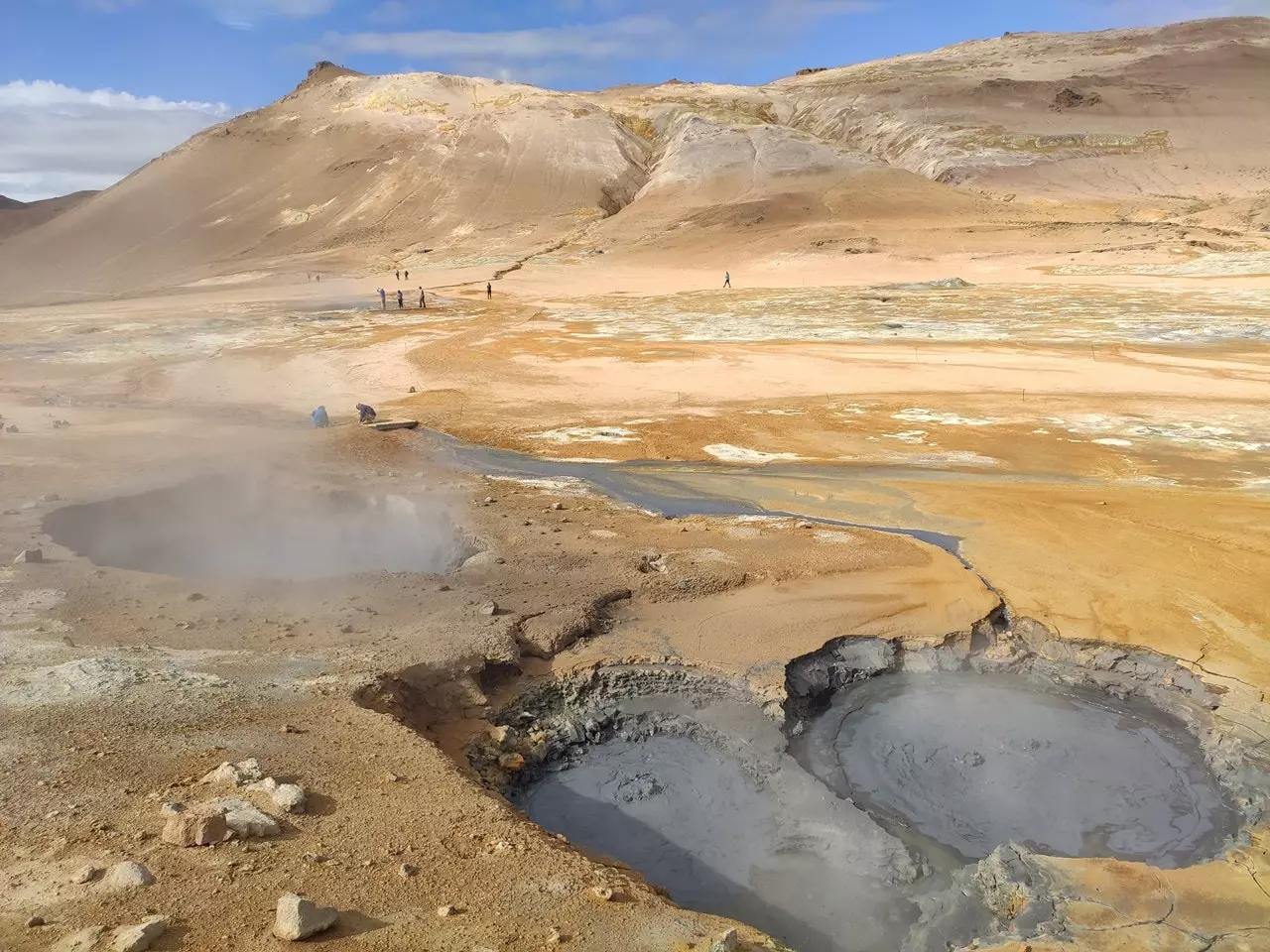
Námafjall fumarole field.
THE NÁMAFJALL FUMAROLE FIELD
Colorful and olfactory is the experience of tour the Námafjall fumarole field. With the feeling of stepping on Mars, we walk through a marked path that leads us through a sulfurous and smoking land, where the smell of rotten eggs is intense, but does not detract from the beauty of multicolored rocks –due to the effect of sulfur and other chemical elements– and the pools of boiling water.
The best panorama is obtained from the top of the small mount Námafjall, which can be reached with a simple walk.
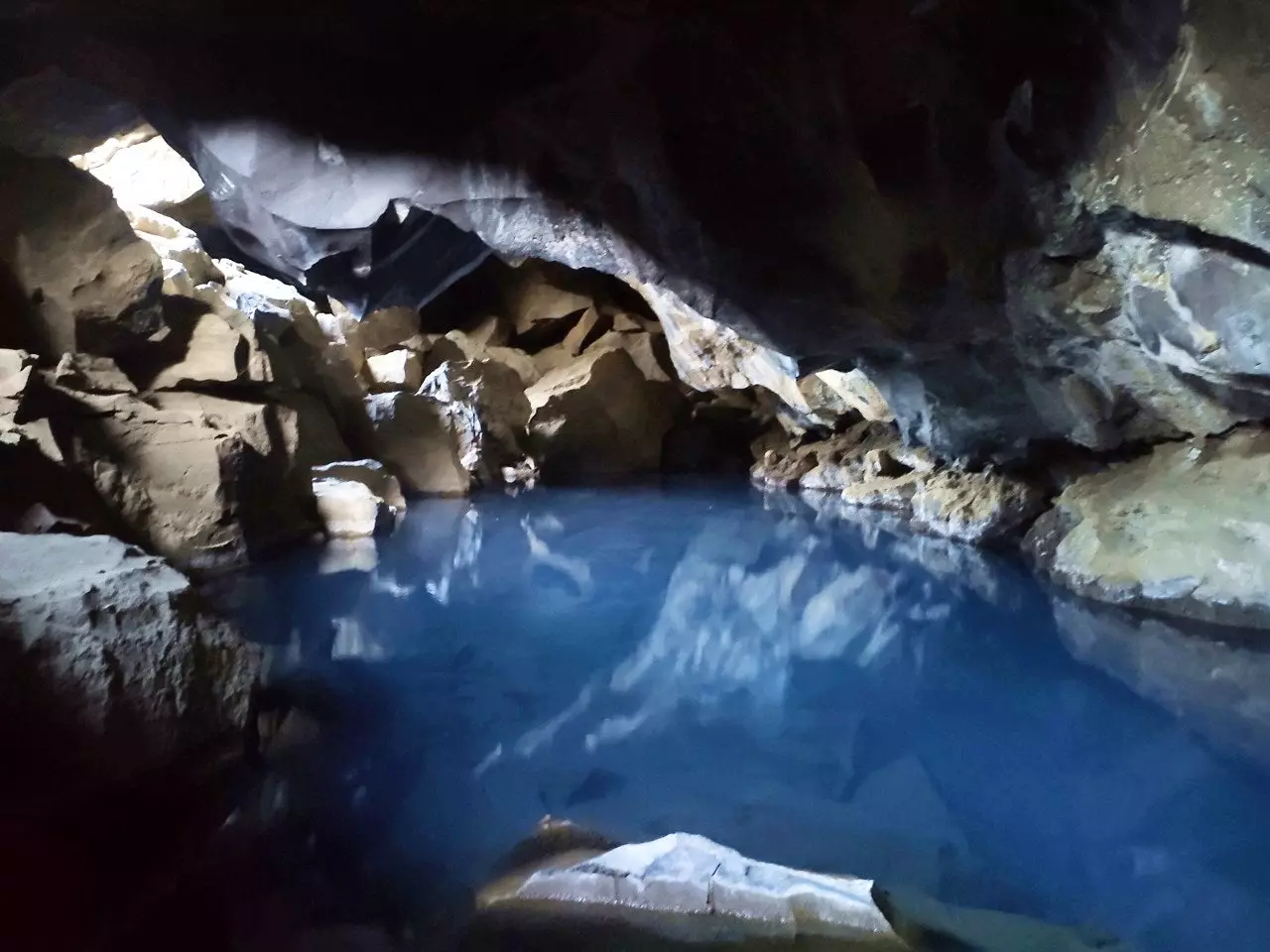
Cave of Grjótagjá.
A PIECE OF GAME OF THRONES
Warmer is the water in the natural pool that has formed in the interior of the small and narrow cave of Grjótagjá. The colors of it seem unreal and perhaps that was what attracted the producers of the legendary HBO series Game of Thrones when they were looking for the perfect location to resolve all the passion contained between a young Jon Snow and Ygritte.
Grjótagja cave became the protagonist of chapter 5 from the third season of the series and nowadays it is visited by its many followers. And that is when we explore the Lake Mývatn area we wonder if we are in the real world or an imaginary place.
